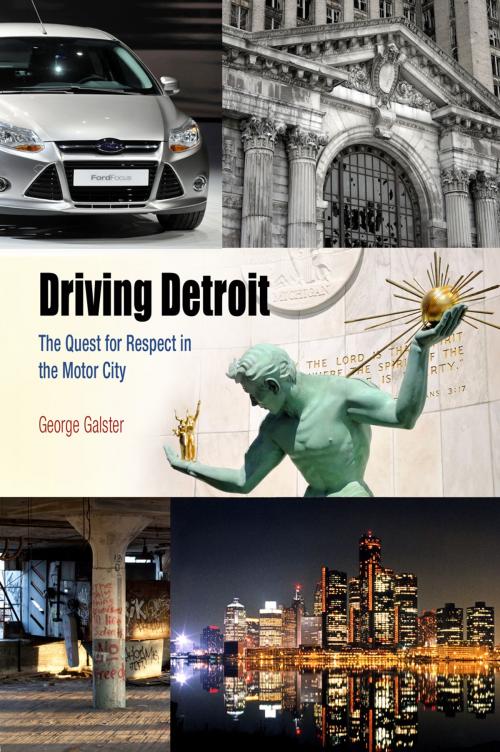Driving Detroit
The Quest for Respect in the Motor City
Nonfiction, Social & Cultural Studies, Social Science, Human Geography, Sociology, Urban| Author: | George Galster | ISBN: | 9780812206463 |
| Publisher: | University of Pennsylvania Press, Inc. | Publication: | August 16, 2012 |
| Imprint: | University of Pennsylvania Press | Language: | English |
| Author: | George Galster |
| ISBN: | 9780812206463 |
| Publisher: | University of Pennsylvania Press, Inc. |
| Publication: | August 16, 2012 |
| Imprint: | University of Pennsylvania Press |
| Language: | English |
For most of the twentieth century, Detroit was a symbol of American industrial might, a place of entrepreneurial and technical ingenuity where the latest consumer inventions were made available to everyone through the genius of mass production. Today, Detroit is better known for its dwindling population, moribund automobile industry, and alarmingly high murder rate. In Driving Detroit, author George Galster, a fifth-generation Detroiter and internationally known urbanist, sets out to understand how the city has come to represent both the best and worst of what cities can be, all within the span of a half century. Galster invites the reader to travel with him along the streets and into the soul of this place to grasp fully what drives the Motor City.
With a scholar's rigor and a local's perspective, Galster uncovers why metropolitan Detroit's cultural, commercial, and built landscape has been so radically transformed. He shows how geography, local government structure, and social forces created a housing development system that produced sprawl at the fringe and abandonment at the core. Galster argues that this system, in tandem with the region's automotive economic base, has chronically frustrated the population's quest for basic physical, social, and psychological resources. These frustrations, in turn, generated numerous adaptations—distrust, scapegoating, identity politics, segregation, unionization, and jurisdictional fragmentation—that collectively leave Detroit in an uncompetitive and unsustainable position.
Partly a self-portrait, in which Detroiters paint their own stories through songs, poems, and oral histories, Driving Detroit offers an intimate, insightful, and perhaps controversial explanation for the stunning contrasts—poverty and plenty, decay and splendor, despair and resilience—that characterize the once mighty city.
For most of the twentieth century, Detroit was a symbol of American industrial might, a place of entrepreneurial and technical ingenuity where the latest consumer inventions were made available to everyone through the genius of mass production. Today, Detroit is better known for its dwindling population, moribund automobile industry, and alarmingly high murder rate. In Driving Detroit, author George Galster, a fifth-generation Detroiter and internationally known urbanist, sets out to understand how the city has come to represent both the best and worst of what cities can be, all within the span of a half century. Galster invites the reader to travel with him along the streets and into the soul of this place to grasp fully what drives the Motor City.
With a scholar's rigor and a local's perspective, Galster uncovers why metropolitan Detroit's cultural, commercial, and built landscape has been so radically transformed. He shows how geography, local government structure, and social forces created a housing development system that produced sprawl at the fringe and abandonment at the core. Galster argues that this system, in tandem with the region's automotive economic base, has chronically frustrated the population's quest for basic physical, social, and psychological resources. These frustrations, in turn, generated numerous adaptations—distrust, scapegoating, identity politics, segregation, unionization, and jurisdictional fragmentation—that collectively leave Detroit in an uncompetitive and unsustainable position.
Partly a self-portrait, in which Detroiters paint their own stories through songs, poems, and oral histories, Driving Detroit offers an intimate, insightful, and perhaps controversial explanation for the stunning contrasts—poverty and plenty, decay and splendor, despair and resilience—that characterize the once mighty city.















